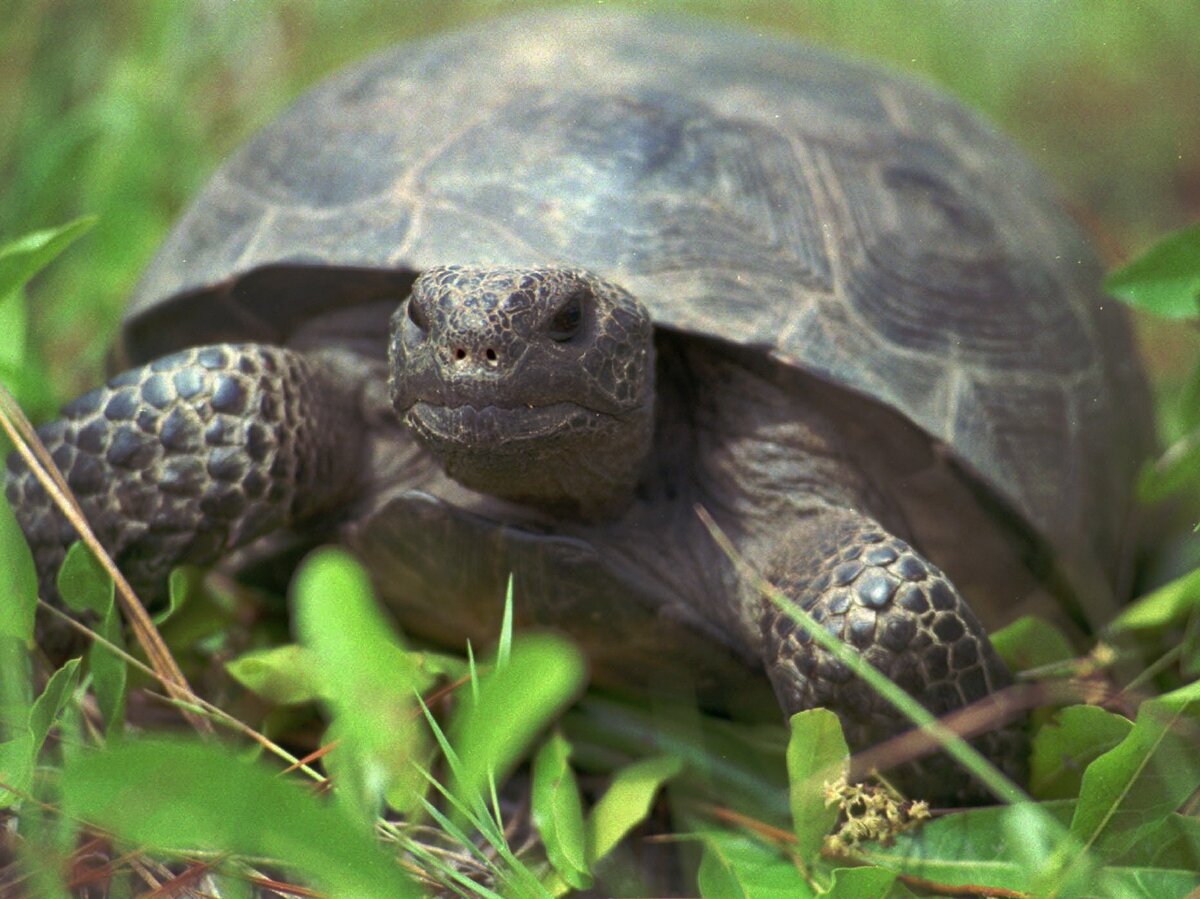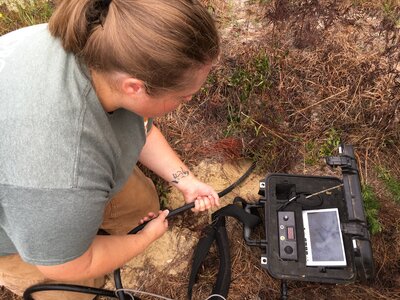 |
| A female gopher tortoise |
In the state of Georgia, it was recently reported that a joint collaboration has been formed between wildlife agencies, environmental groups, private foundations, and even the Department of Defense on a project to save the gopher tortoise. The project is called the Georgia Gopher Tortoise Initiative and it is hoped that enough animals will be protected so that federal control will not be needed. One of the companies involved in the project is the state's largest electric company, Georgia Power, whose power plants are said to be occupied by the tortoises. One of these plants is Plant Hatch, a nuclear facility in south Georgia. According to Jim Ozier, a wildlife biologist with Georgia Power, the company is ensuring the tortoises are not affected by power upkeep and also reconstructing their longleaf pine forest habitat. It is said that Georgia, private foundations, and the federal government are raising $150 million for the project.
 |
| Jim Ozier of Georgia Power standing under transmission lines running from Plant Hatch. |
The collaboration has resulted in positive reactions from members of both wildlife groups and business groups. For example, Georgia field supervisor Don Imm of the U.S Fish and Wildlife Service stated that gopher tortoises will be protected by the federal government if science says so and further added that doing something to avoid conflict is a "much better result." Doug Miell, a consultant with the Georgia Chamber of Commerce, called the partnership a "good example" of various groups coming together to show that they are able to achieve the same goal, despite looking at the problem in different ways. Tracey Tuberville, an associate scientist at University of Georgia's Savannah River Ecology Lab, also praised the partners working on rebuilding the land but pointed out that it is better to seriously reintroduce rare species in some cases. Nonetheless, she has hope for the tortoises with what the initiative is doing.
 |
| Savannah McGuire of the Georgia Department of Natural Resources deploying a camera down into a gopher tortoise burrow. |
I greatly applaud the efforts Georgia is putting in which both wildlife and business groups come together to save an endangered species, which in this case are gopher tortoises. This joint partnership should be seen as a model for other states in the U.S when it comes to implementing efforts to save endangered species. Wildlife conservation should not be seen as work that can only be performed by scientists, researchers, conservationists, and various wildlife and conservation groups. It should be implemented through joint partnerships between both wildlife and non-wildlife groups, including various businesses, companies, government agencies, and other such organizations. Although these groups differ from wildlife, environmental, and conservation groups in terms of ideas and views towards conservation-related issues, both sides should be able to reach the goal of ensuring the well-being and protection of endangered species without conflict. If businesses and companies in Georgia are able to work together with wildlife and environmental groups without resorting to conflict, then so can other similar organizations in the U.S and other parts of the world. I firmly believe that joint cooperation between wildlife and non-wildlife groups is highly essential to deal with issues related to wildlife conservation and the global environment. This includes climate change, global warming, and the illegal poaching and trade of endangered wildlife.
View article here
No comments:
Post a Comment